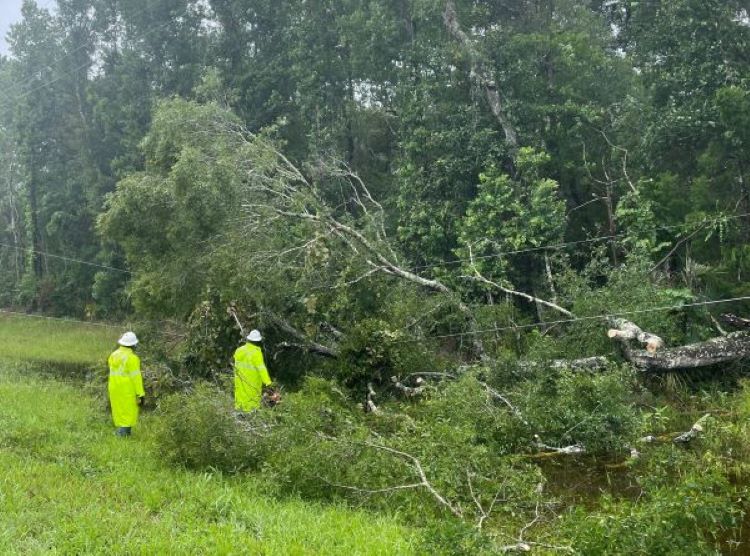
Updated: July 12, 2021
Elsa, the first named tropical weather system to make landfall in the United States this year, knocked out power to thousands of electric cooperative members in Florida last week. But service was quickly restored with help from other co-ops and contractors.
“We sincerely appreciate the mutual aid we receive from co-ops within Florida and nationwide—that plays a key role in each co-op’s restoration plan,” said Mike Bjorklund, general manager of the Florida Electric Cooperatives Association.
Bjorklund praised the skill and speed of co-op crews who began outage repairs as winds subsided and restoration work could be undertaken safely. He also thanked co-op members and commercial-industrial account holders for their patience and support in the aftermath of the storm.
“Their individual storm prep is essential to recovery from any storm,” Bjorklund said.
Elsa formed in the central Atlantic and reached hurricane strength with sustained winds of 75 mph before pushing through the Windward Islands on July 2. After peaking at 85 mph, the system lost some strength over Cuba and entered the Gulf of Mexico on July 5 as a powerful tropical storm.
Packing highest-sustained winds of 65 mph, the storm moved ashore north of Steinhatchee on July 7, pounding communities served by Tri-County Electric Cooperative and knocking out power to nearly 5,400 of the co-op’s 18,000 meters.
“The height of the storm came through midday, and we were able to work through the storm. Power was restored to the majority of TCEC members by midnight,” said John Tuten, the Madison-based distribution co-op’s vice president of operations. Work was wrapped up before dawn July 9.
“The support from our neighboring co-ops, West Florida Electric Cooperative, Escambia River Electric Cooperative and CHELCO, made the difference in our restoration times,” said Tuten.
“We are grateful for their hard work, safety efforts and dedication to our members like they were their own.”
Co-op help and contractors also allowed Live Oak-based Suwannee Valley Electric Cooperative to work through outages affecting over 12,700 of its meters, said CEO Mike McWaters.
Ninety people, including lineworkers, vegetation management and support personnel, helped with restoration efforts, said McWaters. “At times like this, it’s good to have friends who are willing to lend a hand.”
Co-ops and other utilities intensified their seasonal preparations as meteorologists warned the storm’s track would carry it inland through the Florida Panhandle and parallel to the Eastern Seaboard.
Georgia Electric Membership Corp. reported about 435 outages among the state’s co-ops Thursday morning, primarily in southeastern coastal counties. The Electric Cooperatives of South Carolina reported outages affecting about 3,000 meters Thursday, but crews handled most repairs with local personnel.
Elsa maintained tropical storm status as it pushed through the Mid-Atlantic region into New England, dumping heavy rain over coastal areas and causing flash flooding, but storm-related outages in co-op-served areas were not severe enough to require major restoration efforts.
Early tropical weather activity in the Atlantic Basin has prompted researchers at Colorado State University’s Tropical Weather and Climate Research Center to revise their seasonal hurricane forecast of 18 named storms slightly upward, to 20.
“We anticipate an above-normal probability for major hurricanes making landfall along the continental United States coastline and in the Caribbean,” said Phil Klotzbach, lead researcher.
Derrill Holly is a staff writer for NRECA.